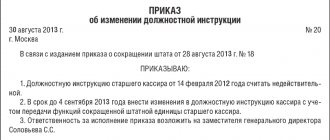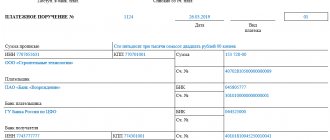Russia is ruled directly by the Lord God. Otherwise, it is impossible to imagine how this state still exists.
Burchard-Christoph Munnich
If you have worked in Russian ministries, departments or management companies of large federal holdings, then most likely you have encountered a management system based on instructions. This system is extremely simple and easy to use, it can be compared to a Kalashnikov assault rifle, which is simple and at the same time effective. And it is precisely for this approach that the management system by orders is loved and used by many managers in Russia.
How does management by orders work?
For those who are not aware of how the control system works, on instructions, I will describe it. All documents, tasks, information received by the company, as well as problems from the “lower floors” of the organization are analyzed by senior management. After this, certain decisions are made, which are formalized in the form of instructions, registered and monitored according to deadlines. There may be an option when instructions are formed at a meeting, and then the minutes indicate a list of assigned instructions, which are registered, communicated to the executors and put under control.
If the participation of representatives of several departments is necessary to complete the assigned task, then the task is assigned to all of them. In this case, one of the managers is appointed responsible for the execution of this assignment, and it is he who must present the results of joint work.
An irreplaceable attribute of an order is the deadline for its execution, and it is when this deadline arrives that the results of its implementation must be presented to the manager. In practice, the order is not executed by the managers who received it, but is passed down the management hierarchy: it is “signed off” for execution by those employees who will perform the tasks specified in the order. After some time, as a result of such a “listing”, everyone who must participate in the execution of the assignment receives from their managers tasks and deadlines for their completion.
True, there is a nuance associated with the fact that since key managers of the company are involved in such “writing” of instructions, the time spent on “writing” can be significant. In large organizations it can reach several days, which reduces the time remaining for the execution of the order itself. At the same time, managers, by assigning a task to their subordinates, reduce the deadline. After all, you still need to check the result yourself, give comments, and also leave time for the performer to process the result.
As a result, with a high hierarchical structure, when the order reaches the executor, the deadline for its execution turns out to be “tomorrow” at best, and most often “yesterday”. And therefore, the executor tries to complete the order as quickly as possible, often on formal grounds, in order to transfer it back to the manager.
It is much more difficult to carry out an assignment if employees from other departments are assigned as co-executors. Then you will have to work together with them, and then agree on the results with all stakeholders. Such large-scale coordination, taking into account the interests of various departments, can take a fairly long period of time and require many meetings. And after all co-executors come to a common opinion, the result will be demonstrated to the head of the company who issued the order. If the manager doesn’t like the result, the cycle will repeat, albeit at a faster rate, because the performers have already been appointed.
The order management system has its advantages: first of all, it is simplicity and clarity for managers and executors, transparency of responsibility for execution, and ease of regular monitoring of the deadlines for the execution of orders. At the same time, if we remember the past, then for management by orders there were enough paper documents to formalize orders, pens for “signing” them and log books where the order, execution date and person in charge were recorded.
The system for monitoring the execution of orders makes it easy to find someone responsible for missing deadlines or poor quality execution. After all, all orders are recorded, and it is possible to determine at what stage the execution of each of them is. Then you can call the person in charge or the executor and speed up the execution of the assigned task.
At the same time, due to its simplicity, management by orders has some disadvantages that must be mitigated when using this system in practice.
Sample instructions from the manager to complete the task
Travel tickets.
Today, society has become more informational; employees and employers are better aware of their rights in various situations.
However, certain abuses of such rights are not uncommon. Sample written assignment for an employee As a result, deadlines for various projects are missed, goods do not arrive on time, shipments are delayed, and angry customers hang up on phones.
But you never know what can happen if the work is done at the wrong time, done incorrectly or not done at all. However, there is a simple technology that allows a manager to get employees to complete their tasks in a timely and correct manner.
Sample written assignment to an employee Familiarization with this material will give you the opportunity to avoid mistakes when arranging such business trips and avoid sanctions from regulatory authorities.
This is followed by the administrative part of the document. This section lists all prescribed actions and functions that are assigned to employees to carry out this order. Incomplete fulfillment of the imperative contained in the order, or failure to complete the assigned task, is fraught with sanctions from the manager for employees.
Orders relating to core activities can cover a wide range of issues:
- changing the structure of the company (reorganization, liquidation);
- financial and economic problems;
- logistics tasks.
Orders formalize all issues related to the organization’s personnel: hiring, transfer to another position or to another structural unit, dismissal, granting vacations, penalties and rewards for employees.
The ascertaining part of the order drawn up on an initiative basis must include the purpose and objective of the actions that must be performed by the employees of the enterprise. The events or facts underlying the publication of a particular operational document may also be listed here.
In such cases, the order may begin with the phrases “In connection with,” “For the purposes of.” If the indicated actions of employees do not require justification or additional explanation, the ascertaining section of the ORD may be absent.
After the sentence covering the ascertaining part of the order, an incentive to action is written in the form of the words “I offer” or “I oblige.” This is followed by the administrative part of the document. This section lists all prescribed actions and functions that are assigned to employees to carry out this order.
Tips, recommendations. Answers to questions read... Certificate of acceptance and transfer of work performed, services rendered. Example. Template...Example of work (service) acceptance certificate...
What are the differences between business text and speech formats? Formal vocabulary...Business text style. Characteristic features of formal vocabulary. The style of the official…
That is why each order must be documented, issued in writing, preferably against signature. Then there will be no problems with misunderstandings. But at the same time, you need to remember that all instructions must be stated very clearly, concisely, without the possibility of ambiguous interpretation. In addition, a correctly formulated instruction must clearly indicate:
- deadlines
- responsible officer
- criteria for assessing the quality of implementation (according to measurable indicators)
For each order, three persons must be identified: the initiator, the executor and the controller. Often the initiator and the controller are the same person, for example, the head of a department. Other situations are also possible.
Unification of the order issuing system has many advantages. The instruction, stated in writing, contains comprehensive information - its essence, terms (deadline), all responsible persons. When there are uniform requirements for the written format of instructions, employees get used to them and it is much easier for them to work when moving to other departments.
Since, as we have already noted, the practice of issuing written assignments too clearly makes it clear to the employee that the employer has begun offensive actions, many employers do not resort to it.
Instead, they send detailed tasks to the worker via email. It is difficult, but feasible, to prove the fact that an employee has failed to fulfill his duties based on corporate correspondence. The problem does not arise when the employee does not deny that it is customary in the company to assign tasks via email.
Local act on the rules for using business email. It’s good if the company has a special document that states for what purposes corporate email is intended, how often an employee should check it, etc.
Reports on read messages. In many email programs (MS Outlook, etc.), you can enable the function of receiving reports on the delivery of letters and their reading by the recipient. In case of a dispute, this will also be evidence that the employee opened the received letter and became familiar with its contents.
The employee’s response letter to the employer’s instructions. If the employee confirmed in correspondence that he received the employer’s instructions, this will be the most significant evidence that he knew about the work that he must perform.
At the same time, a clearly formulated goal can serve as additional motivation for employees.
What is the difference between an order of a manager and an order for an enterprise? An order and an order of the head of an organization are the same type of documents expressing the will of the sole executive body of the enterprise represented by its director (general director, president).
An order for an enterprise is issued regarding the resolution of issues related to the main activities of the company or its personnel.
An order is the most categorical form of administrative influence; it contains a requirement for the mandatory execution of the manager’s decision.
Travel tickets.
However, the practice of issuing orders that do not contain a stating part is common. In this case, the text of the order begins directly with the paragraphs formulating administrative actions.
If the need to explain the issuance of an order still exists, then it is justified in the introductory part, and the text of the administrative part begins with the word “I PROPOSE” or “OBLIGER”.
The order comes into force from the moment it is signed.
Undated power of attorney. A power of attorney in the Pension Fund is a document that gives the authority to the authorized person to represent the interests of the enterprise in the Pension Fund: receive documents, submit reports, etc.
An employment contract must be distinguished from a work contract. An employment contract provides the employee with a number of benefits, guarantees and compensations not provided for in contractual relations. The employment contract is concluded in writing, drawn up in two copies, each of which is signed by the parties.
One copy of the employment contract remains with the employee, the other is kept by the employer. The fact that a copy of the employment contract has been received by the employee is certified by the employee’s signature on the copy of the employment contract kept by the employer.
First I will say “needed” because management said so. I, of course, understand that this is not really necessary, well, it won’t hurt you, but since the management said it, you’ll have to do it. It is necessary to complete all personnel documentation for the past year.
We already have them all in one folder, and you just need to carefully file them. Look through them all carefully, sort them by dates and surnames, punch a hole and paste them into this big folder.
Let's say an employee listened to his boss, who instructed him to make a sample of the client base - to select companies that have not placed an order for more than three months. In the future, when performing a task, this employee may forget some details of the task or perform them in his own way.
If the boss makes a complaint about the incorrect completion of a task, the subordinate will have excuses. The performer may say that he misunderstood the task or that some of its details were not specified at all.
For each order, three persons must be identified: the initiator, the executor and the controller. Often the initiator and the controller are the same person, for example, the head of a department. Other situations are also possible. Sometimes the execution of an order is controlled by a person who is not the executor’s boss.
Unification of the order issuing system has many advantages. The order, stated in writing, contains comprehensive information - its essence, terms (deadline), all responsible persons. The law does not provide for fines for the fact that employees were not given copies of the SZV-M. The employer has no such obligation.
However, if an employee still needs these documents, he can file a complaint with the labor inspectorate, prosecutor's office or court. This is unlikely, but the risk still exists. Therefore, if an employee demands a copy of the SZV-M in hand, it must be issued.
However, unlike simple, daily obligations, errands can range from simple to, at times, impossible.
Disadvantage one: general formulation of the problem
In practice, there is often an insufficiently detailed description of the assigned order, which is revealed only when the order is received by the executor at the lower level of the hierarchy, since managers at higher levels of management often only route the task, without specifying its details. At the same time, due to hierarchical barriers in large companies, it is no longer possible to clarify with the initiator of the order what exactly needs to be done on the task. After all, it is simply unrealistic for a performer to “go up” through so many levels of the management hierarchy.
Example from practice. A meeting was held in one of the largest Russian companies, as a result of which many orders were born, distributed among specialized functional units. One of the departments, having received an order, could not understand from the written text what still needed to be done, and, having gathered organizational courage, asked the head of the management hierarchy to clarify this. The answer deserves publication: “We don’t have enough time to write instructions, let alone clarify them. You are professionals! They must do what they are told on time!”
Example from practice. Once, the head of the IT department of a large state-owned company was instructed to buy a geographical map of Russia to place on the wall in the CEO’s office. At the same time, the manager who brought the order from the top floor of power could not answer the question of what specific card was needed, and did not allow the general director to be bothered with “stupid” questions. As a result, the head of the IT department, carrying out instructions, brought two cards: one paper, the second on the screen of a huge tablet. However, he did not guess correctly in either case. It turns out that the general director wanted a three-dimensional plastic map on which the Russian relief in different regions would be visible.
Recommendation 1. When setting an order, the key success factor is the detailing of the task so that the performer can clearly understand what he needs to do. To do this, you can use different techniques and questions, for example: “Who? When? In what format? What should I do? Who should I agree with? Who should I introduce it to?"
Manager’s order: competent execution of the assigned task
- orally; by issuing a written document; in the form of a telephone message.
An order that is not properly documented may relate to immediate tasks that are of medium to low importance.
Most often, these types of instructions are issued in teams with a small number of personnel.
If the issue that needs to be resolved is of significant importance, then an oral order can be supported by the publication of a written document. How to correctly set the task For a manager’s order to be as effective as possible, it must be clearly and specifically formulated. The psychological perception of a task defined vaguely and indefinitely will not allow employees to carry out the manager’s instructions efficiently and on time.
Disadvantage two: long “listing” of instructions
Long periods of “writing” instructions from managers to executors, the difficulty of collecting the opinions of co-executors and the conflict nature of the procedure for agreeing on results leads to the fact that much less time is spent on execution than on routing and approval. As a result, most orders are executed formally. And the main task of the executor is to close the order on a formal basis or, as a last resort, to move its deadline, since the executor lacks either deadlines, resources, or authority to obtain a high-quality result.
Example from practice. In one large Russian organization, it took five to seven days to route one of the documents top-down. The return journey from the performer to the manager through the entire hierarchy takes another five to seven days. Moreover, as a result of all these actions, the document acquired only a couple of entered names and a seal, which were entered by the executor in an hour at the lowest level of the hierarchy. The managers only wrote: “For execution,” since there was nothing to change in the document itself, its form was fixed by regulation. As a result, the document circulated through the management hierarchy for more than ten days, but was processed in just an hour, and by the lowest paid performer.
Recommendation 2. When assigning instructions, it is most effective to assign them through management layers, as close as possible to the executor. However, for this it is necessary that the office or manager routing the order knows exactly in which department of the company the specialist on this or that issue is located, and upon appointment, notify his manager about the task.
Disadvantage three: too many co-executors
Managers, when “writing out” instructions, often add several heads of subordinate departments as co-executors. They, in turn, add several of their subordinates. And as a result, many employees are involved in the execution of the order, without whom one could completely do without. Due to the large number of participants, labor costs increase, and most importantly, many opposing positions arise that need to be brought together when executing the assignment. All this not only delays obtaining the result, but also significantly increases the costs of obtaining it.
Example from practice. In one large Russian company, the number of participants in the execution of various assignments often exceeded fifty, which led to many meetings, and a huge number of documents and opinions. As a result, even the simplest assignment, such as responding to a potential counterparty to an advertising letter, took at least two to three weeks in this company. At the same time, the answer itself, as a rule, consisted of the usual phrase: “Thank you very much for the invitation. If we hold a tender on this topic, we will be glad to see your company participate.”
Recommendation 3. When appointing executors, you should try to adhere to the principle of “necessity and sufficiency” so as not to add extra employees to the execution of the assignment.
Disadvantage four: all tasks are formalized as instructions
Managers often use an order management system not only to control the execution of key tasks, but also for regular activities, actually taking the initiative away from the level of management and performers, thereby concentrating all management decisions at the top level. This approach leads to the fact that the organization’s employees stop working independently and begin to work only when they receive an order. In this case, all power is concentrated at the upper levels of management, and all decisions are made only there. Now employees work only when there is an order. And when it is not there, they take a wait-and-see attitude, focusing on their favorite hobby or simply doing nothing.
Example from practice. In one Russian company, the number of orders exceeded a thousand, while any activity was formalized in the form of an order and controlled. At the lower level, employees tried to fulfill the order according to formal criteria as quickly as possible. After all, there are several levels of hierarchy above them, and the result there will be redone more than once. Then they moved on to their “favorite activities”: some studied English, while others simply played Lines on the computer while waiting for the end of the working day.
Recommendation 4. The assignment management system should be used only for critical tasks that require the participation of top managers and strict control of deadlines. Whereas it is better to run the main flow of tasks through a regular business process, monitoring performers and managers using operational reporting or through financial indicators.
Sample order of the General Director
Is it necessary to coordinate the order with the director of the company? Orders issued on behalf of the head of a structural unit or department are usually a consequence of the strategic policy of the director and the administration of the company pursued in the company - self-will in drawing up this kind of paperwork is unacceptable for middle managers.
Therefore, in most cases there is no need to coordinate the order with the director. Is it necessary to provide justification for an order? An order, just like an order, must be justified. If possible, you should indicate the rule of law, the implementation of which served as the basis for writing the order, or enter an objective reason for creating the document (in the form of “In connection with ....”). After stating the rationale, the further part of the order should end with the word “I offer” or “I oblige.”
Send weekly reports to members of the board of directors by email on the progress of the decision and report at meetings of the board of directors. [Date, signature] Classification in office work If the company has a regulation on office work and an internal classification of documents, then at the end of the document an indication of its ownership and codification is made. For example, the Order belongs to the 'Personnel' classifier.
But there is another position.
In some enterprises (and this is especially true for government agencies), an order and an order are conventionally distinguished according to the following characteristics: Order Order Influences the activities of the enterprise More often related to the implementation of instructions that do not fundamentally affect the activities of the enterprise Is of a long-term nature More often concerns one-time tasks The instruction begins with the word “I order” The instruction begins with the words “I oblige” or “I order.” Look at what the general director’s order might look like - a sample. But still, the difference between these two concepts for ordinary commercial organizations is very relative.
Therefore, later in the article we will talk about the manager’s order.
Disadvantage five: lack of horizontal interaction
If the execution of an assignment requires the joint work of representatives of two functional departments, it often happens that the responsible person cannot achieve the desired result from his co-executor, since the co-executor is not interested in helping the “neighbor”. In this case, it is possible to influence through the upper levels of management, complaining to a common manager between you and your “neighbor.” However, in this case, the senior manager will most likely be unhappy that you escalated the task to him. And that “neighbor” whom you “forced to cooperate” will not forget to repay the debt to you later, as soon as the opportunity arises. You can solve this problem on an informal level using the principle of help others and they will help you. However, with the arrival of a new leader, all informal connections collapse, and informal relationships have to be built anew.
Example from practice. In one company, departments did not cooperate with each other when completing assignments. As a result, only those orders were carried out in which one unit participated. And as soon as several units were involved in the execution of an order, the deadlines for completing the orders were missed, or the person responsible was punished and the order was transferred to another. At the same time, horizontal connections were disrupted due to the constant rotation of managers.
Recommendation 5. To execute cross-functional orders, it is necessary to allow a formal way of assigning subtasks to “neighboring” departments based on the received order. And if the deadlines for completing subtasks are missed, it is necessary to punish the head of the “neighboring” department, who was a co-executor of the assignment. The second option, which can be used for large-scale assignments, is the formation of a project team with all the artifacts of project management and the appointment of a project manager who has the appropriate authority and regularly monitors the timing and results of the project stages.
Instruction to the employee in writing
02/07/2019 An order is a document that relates to the local management documentation of an enterprise and operates strictly within it. Orders are widespread both in organizations of the commercial sector and in government and budgetary institutions. Some managers prefer to give orders to subordinates orally: with their point of view, this saves time and eliminates additional paperwork. However, this option is not the best solution. For example, there are cases when an employee carries out an order from his superiors improperly or completely ignores it. In such a situation, it will be impossible to bring him to disciplinary action for failure to comply with a verbal order. If you draw up the document in writing, such difficulties (and many others) can be avoided. That is why experts strongly recommend that all key working moments in terms of administrative activities be formalized in writing: orders or instructions. Orders and orders are somewhat similar to each other: they have approximately the same structure, purpose, etc.
However, there are differences between them: Area of influence. The main difference between an order and an order is that an order regulates legal relations and the main activities of the company, while an order regulates operational issues. Validity period.








